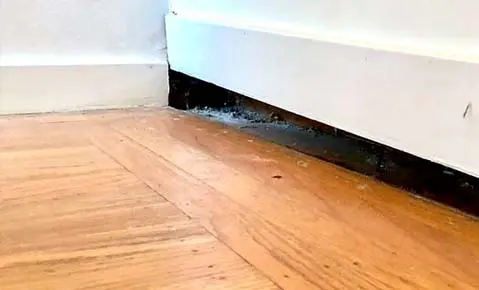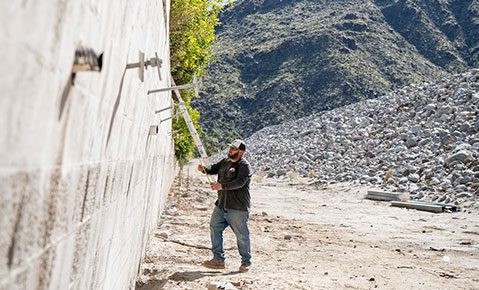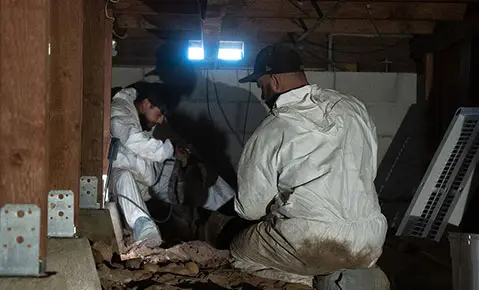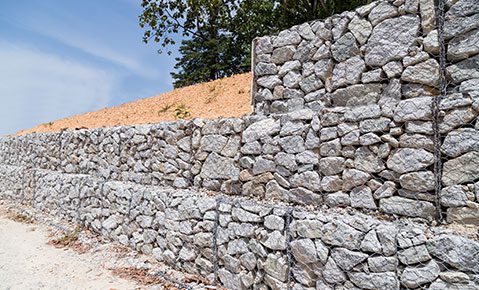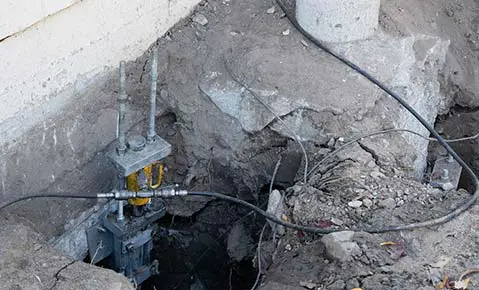French Drains are the best way to go when it comes to mitigating standing water and protecting the structural integrity of your foundation.
Proper drainage is one of the most important aspects of foundation maintenance. It’s imperative that foundations stay dry to inhibit expansive soil wear and tear. Standing water and excessive moisture can set off a whole litany of problems –
- Concrete Spalling
- Foundation Settlement
- Foundation Heave
- Rusted rebar and compromised footings
- Mold and Wood Rot
All of these issues above can lead directly to foundation failure, which can cost thousands of dollars to repair. If I learned anything from the farm it is preemptive maintenance is the best form of maintenance.
Water can be rerouted away from the foundation by footing drains, gutters, and at least a 2% grade sloped away from the home. And, of course, the big guns – French Drains.
While the name French Drain might evoke eating croissants under the Eiffel Tower as a mime chain-smokes in a black beret, French Drains really aren’t all that sophisticated.
We’ve received many questions over the years:
- What is a French Drain?
- What are the advantages and disadvantages of French Drains?
- How to dig a French Drain around my house?
For the answer to this last question, check out the article by our friends at HGTV – How to Install French Drains.
Signs you need a better drainage system:
|
French Drains
French Drains are simple and composed of two components – a ditch and a perforated pipe buried under gravel. The pipe redirects the water away from home, yard, and or affected area, often discarding the runoff into a drain or creek.
French Drains are a ground-level form of drainage.
The two primary types of drainage systems are:Surface Water Drainage SystemsSurface water drainage systems externally channel water away from softscape (i.e. flowerbeds/lawns) and hardscape (i.e. concrete patios/driveways) areas where excess moisture inherently collects/pools. Surface water drainage systems typically conduct runoff to storm drains, creeks, or underground drainage systems. Underground Ground Drainage SystemsUnderground drains, such as French Drains, channel water away from overly saturated soil, lawns, and vegetated areas, directing the water to storm drains or creeks or simply away from a home. Underground drains are incredibly effective at preventing erosion. |
The benefits of French Drains:
- French Drains prove relatively easy to install and do not require any specialized tools
- French Drains are an inexpensive means of drainage, especially if they do not require removal of a previous drainage system or decks and walkways
- French Drains clear otherwise soaked areas of the property to be accessible for gardening or throwing around a football with gramps
- French Drains can save your foundation from spalling, rot, settlement, heave, and all kind of moisture damage
The disadvantages of French Drains:
- French Drains can be tricky in terms of navigating power, water, or buried communication lines
- Current structures may need to be moved or excavated for a drain to be dug
- French Drains, when not properly maintained, can clog, occasionally overflowing, and causing damage
Choose Dalinghaus for All of Your Foundation Needs
While we here at Dalinghaus Construction Inc. do not install French Drains, we strongly recommend them.
Check out our other articles: 3 Ways to Mitigate Foundation Heave and Hillside Home Foundation Problems
Dalinghaus Construction Inc. can help you fix your sinking foundation once and for all with helical pier, push pier, and polyurethane underpinning.
We do foundation underpinning the right way. With over 100 years of combined experience and 4.9 stars out of over 300 reviews – we are here to ensure that you never settle.
If you live in Southern California or Arizona and would like a FREE foundation inspection, click the link below –



